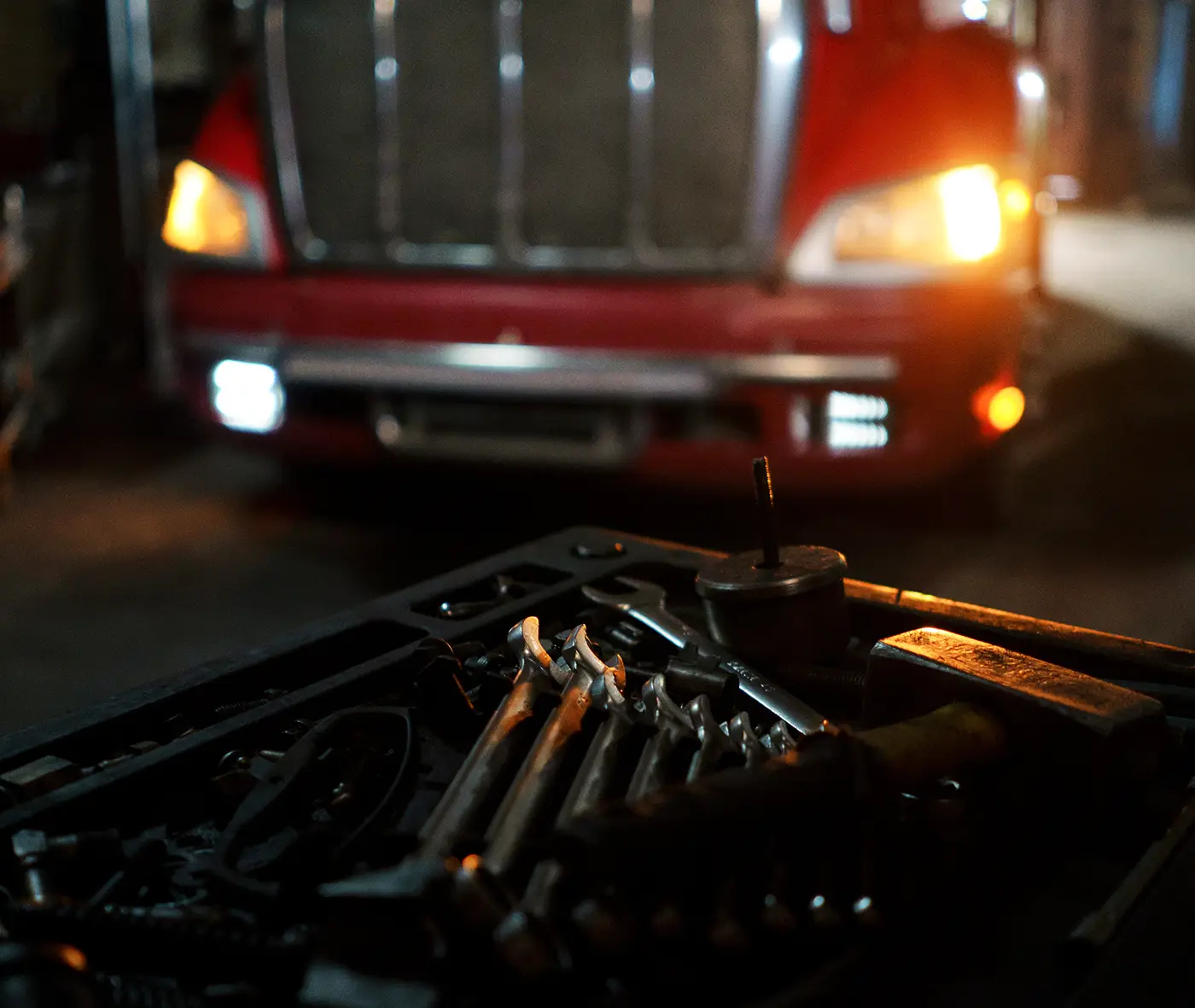.jpeg)
Addressing Turbocharger Failure In Heavy-Duty Truck Engines
Discover the causes, signs, diagnostics, and preventive measures for turbocharger failure in heavy-duty truck engines. Learn about signs like loss of engine power, increased exhaust smoke, and proper maintenance practices to ensure optimal truck performance.

When you're behind the wheel of your heavy-duty truck, the last thing you want is a loss of power and efficiency. Have you ever questioned why your truck engine might not be performing as it should? The culprit could be a malfunctioning turbocharger — be it from a simple problem like restricted airflow or something more serious like oil contamination, and oil starvation.
In this article, we delve into the intricacies of addressing turbocharger failure in heavy-duty truck engines, exploring the common causes, signs, diagnostic methods, and preventive measures. Whether you're dealing with issues related to your truck turbocharger or considering the prospect of turbocharger repair or replacement, understanding the nuances of this critical component is vital for maintaining optimal performance.
The Significance of Turbochargers in Heavy-Duty Truck Engines
To put it in layman’s terms, heavy-duty truck engines rely on turbochargers to boost power and efficiency. These devices compress incoming air, allowing for more oxygen during combustion and subsequently enhancing fuel efficiency, which is important for semi-trucks hauling thousands of pounds of cargo. The role of a turbocharger is pivotal in the overall performance of the engine, making it a component that demands attention and care.
Recognizing the Signs of Semi Truck Turbocharger Failure
Lack of Lubrication
Turbocharger failure can be attributed to various factors, each impacting the longevity and effectiveness of this crucial engine component. Lack of proper lubrication is a common culprit, emphasizing the significance of preventive maintenance. Without adequate lubrication, the turbocharger's moving parts can experience increased friction and wear, leading to potential failure.
Foreign Object Damage
Foreign object damage is another concern for truck turbochargers. In the harsh conditions that heavy-duty trucks often operate in, debris and foreign objects can enter the turbocharger, causing damage to its delicate turbine and compressor blades. This highlights the importance of maintaining a clean and secure environment for the turbocharger.
Overheating
Excessive heat is a pervasive issue that can contribute to turbocharger failure. High temperatures put immense stress on the turbocharger components, leading to accelerated wear and potential malfunctions. Adequate cooling systems and proper maintenance play a crucial role in preventing overheating and subsequent turbocharger issues.
Constricted Airflow
Airflow problems are also a common cause of turbocharger failure. Any restriction in the smooth flow of air to the turbocharger can impede its performance. Regularly checking and ensuring the proper functioning of air intake systems is essential for preventing such issues.
Signs of a Failing Turbocharger
Loss of Engine Power
Recognizing the signs of turbocharger failure is essential for proactive maintenance. A noticeable loss of engine power is a clear indicator that your turbocharger might be struggling. When your truck struggles to accelerate or maintain speed, it's time to investigate the health of the turbocharger.
Increased Exhaust Smoke
Increased exhaust smoke is another sign of potential turbocharger issues. Different colors of smoke can indicate various problems, but a distinct increase in smoke production may suggest a compromised turbocharger. Unusual engine noises, such as whining or grinding sounds, can also point to problems within the turbocharger assembly.
Warning Lights and Diagnostic Codes
Dashboard warning lights and diagnostic trouble codes (DTCs) are modern tools that provide insight into the health of your turbocharger. If your truck's onboard computer detects issues with the turbocharger, it will trigger warning lights or generate specific codes. Using diagnostic tools like OBD-II scanners can help interpret these codes and identify the root cause of the problem.
Diagnosing Truck Turbocharger Problems
Visual Inspection & Diagnostics
Diagnosing turbocharger issues involves a combination of visual inspection, diagnostic tools, and, in some cases, consultation with professional mechanics. A visual inspection can reveal obvious signs of damage, such as oil leaks or visible wear on the turbocharger housing. Diagnostic tools, especially diagnostic scanners, provide in-depth information about the turbocharger's performance, allowing for a more accurate diagnosis.
Consultation With Professional Mechanics
Consulting with professional mechanics is crucial when dealing with complex or hidden turbocharger issues. While visual inspections and diagnostic tools can provide valuable information, the expertise of a trained mechanic ensures a comprehensive understanding of the problem. Professional inspections from a qualified diesel repair shop, such as B&B Truck & Trailer Repair, are especially recommended when dealing with turbocharger replacement or major repairs.
Avoid the Problem: Preventive Maintenance Tasks
Oil Changes
Preventive maintenance is key to ensuring the health and longevity of your truck turbocharger. Regular truck oil changes are fundamental in maintaining proper lubrication, reducing friction, and preventing turbocharger failure. The choice of high-quality oil and adherence to recommended change intervals are critical aspects of this preventive measure.
Air Filter Maintenance
You should also include air filter maintenance in your preventive maintenance checklist. Clean air filters ensure smooth airflow to the turbocharger, preventing issues related to debris and foreign object damage. Regular replacement of air filters, especially in dusty or harsh operating conditions, is a simple yet effective way to protect the turbocharger.
Coolant System Inspection
The coolant system prevents turbocharger overheating, which is why monitoring the coolant system and addressing any signs of malfunction or leaks is imperative for maintaining optimal operating temperatures. Consistent monitoring allows for early detection of cooling system issues that could contribute to turbocharger failure.
Timely Repairs
Addressing minor issues promptly is a preventive strategy that can save truck owners from more extensive and costly repairs. Whether it's addressing oil leaks, tightening loose connections, or replacing damaged components, taking immediate action when issues arise can prevent the escalation of problems and ensure the continued health of the turbocharger.
Should I Repair or Replace?
When faced with turbocharger issues, truck owners have the option of repair or replacement. Repairing minor damage can be a cost-effective solution, provided the extent of the damage allows for effective repairs. However, it's essential to weigh the risks and benefits, considering factors such as the age of the turbocharger and the overall condition of the truck.
In some cases, complete turbocharger replacement might be the more viable option. Indications for turbocharger replacement include extensive damage, wear beyond repairable limits, or the desire for an upgrade to a more efficient model. Choosing the right replacement parts, whether OEM or high-quality aftermarket, is crucial for ensuring compatibility and optimal performance.
Final Words
All in all, addressing turbocharger failure in heavy-duty truck engines is crucial for maintaining optimal performance and preventing costly consequences. Whether it's recognizing signs of turbocharger issues, diagnosing problems through inspections and tools, or implementing preventive maintenance measures, truck owners play a proactive role in ensuring the health of their turbochargers. Decisions related to repair or replacement should be informed by careful consideration of costs, benefits, and the overall condition of the turbocharger. By prioritizing turbocharger health and taking timely action, truck owners can enjoy reliable performance and extend the lifespan of their heavy-duty vehicles.
More Articles

Why Is Regular Fleet Maintenance Crucial for Business Success?

5 Mistakes to Avoid When Choosing a Repair Shop

Maximize Your Fleet Uptime with Proactive Maintenance!
Contact Us
Visit our full-service truck & trailer repair shop in Colona, Illinois, or take advantage of our mobile services offered throughout the Quad Cities area, including Moline & Rock Island, IL & Davenport & Bettendorf, IA. Give us a call, drop by the shop, or fill out our service request form!


